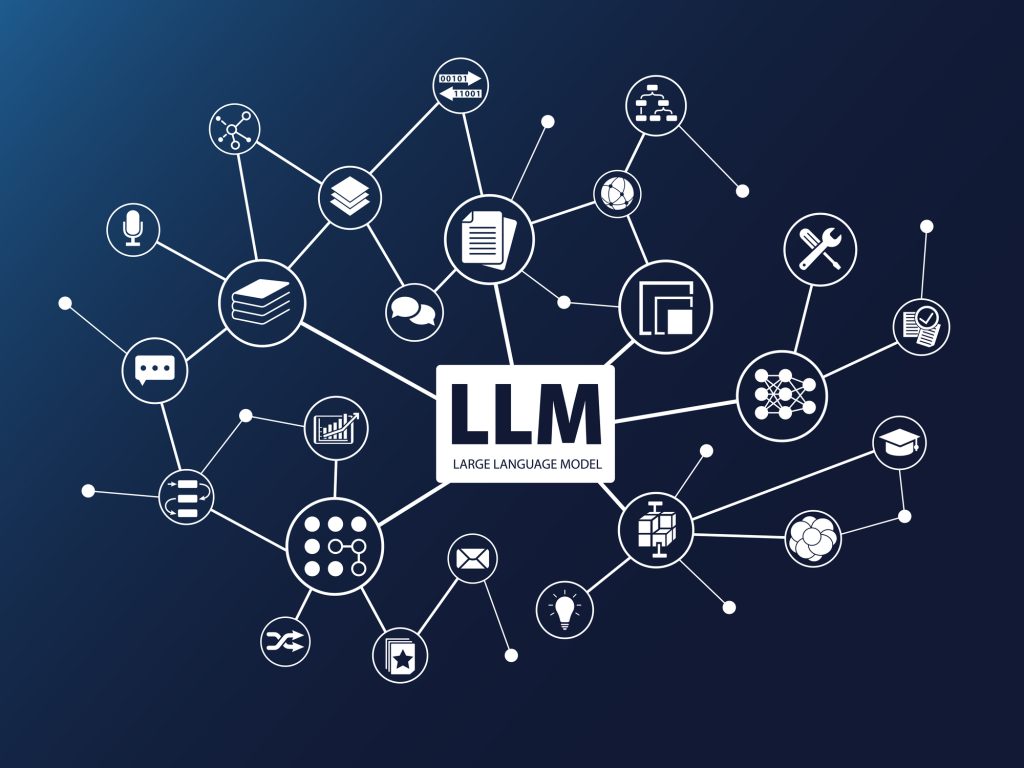Large language models (LLMs) like ChatGPT, Claude, and Gemini have become household names. But behind the hype is an elegant mechanism of math and probabilities. In a recent video, YouTube creator Grant Sanderson breaks down the inner workings of LLMs in a beautifully visual and easy-to-understand way.
If you’ve ever wondered how AI understands language, this guide is for you.
What Are Large Language Models (LLMs)?
At their core, LLMs are massive neural networks trained to predict the next word (or token) in a sentence based on the words that came before.
Just like your phone’s autocomplete, but powered by billions of data points and deep learning models, these systems can generate coherent, insightful, and even creative responses.
How Do LLMs Work? A Step-by-Step Breakdown
1. Tokens and Prediction
Language models don’t see words—they see tokens, which are chunks of text (like “run”, “ning”, or punctuation). Given a string of tokens, the model tries to predict the most likely next token.
Example: If the input is “The cat sat on the…”, the model may predict “mat” based on probability.
2. Probability Tables
LLMs learn by analyzing massive text corpora and creating statistical relationships between tokens. These relationships form a probability distribution of what token is most likely to come next.
3. Transformers and Self-Attention
This is where the magic happens.
The Transformer architecture—introduced in a 2017 Google paper—uses self-attention to let the model “focus” on the most relevant words in a sequence.
For instance, in “The cat sat on the mat because it was soft,” the model can determine that “it” likely refers to “mat”—not “cat”—based on context weighting.
Each word’s representation is updated layer by layer, allowing the model to build nuanced, context-aware meanings.
Why Scale Matters
As 3Blue1Brown explains, increasing the number of layers, parameters, and training data improves performance dramatically. This is why GPT-4 is more powerful than GPT-3—it has more capacity to represent complex relationships.
At scale, models begin to exhibit emergent behaviors like reasoning, translation, and summarization.
Why This Video Is the Perfect Intro to LLMs
3Blue1Brown simplifies deep concepts through animation. Instead of getting lost in jargon, you see how:
Tokens become predictions
Self-attention drives relevance
Layers refine understanding
This makes it the ideal primer for developers, marketers, founders, and the AI-curious alike.
Why Understanding LLMs Matters
LLMs are transforming industries—from SEO to customer service, healthcare to education. Knowing how they work helps you:
Use them more effectively
Prompt them better
Build trust and avoid misuse
Whether you’re using ChatGPT, training your own models, or just curious—this knowledge is power.
📚 Further Learning
Want to go deeper? Check out:
OpenAI’s technical overview of GPT models
Google’s paper: “Attention Is All You Need”
Final Thoughts
Large language models may seem like science fiction, but they’re grounded in logic, data, and elegant architecture. As Grant Sanderson shows, anyone can grasp the basics with the right visuals.
Understanding LLMs isn’t just for engineers—it’s for anyone who wants to thrive in the AI era.
Large language models (LLMs) like ChatGPT, Claude, and Gemini have become household names. But behind the hype is an elegant mechanism of math and probabilities. In a recent video, YouTube creator Grant Sanderson breaks down the inner workings of LLMs in a beautifully visual and easy-to-understand way.
If you’ve ever wondered how AI understands language, this guide is for you.
What Are Large Language Models (LLMs)?
At their core, LLMs are massive neural networks trained to predict the next word (or token) in a sentence based on the words that came before.
Just like your phone’s autocomplete, but powered by billions of data points and deep learning models, these systems can generate coherent, insightful, and even creative responses.
How Do LLMs Work? A Step-by-Step Breakdown
1. Tokens and Prediction
Language models don’t see words—they see tokens, which are chunks of text (like “run”, “ning”, or punctuation). Given a string of tokens, the model tries to predict the most likely next token.
Example: If the input is “The cat sat on the…”, the model may predict “mat” based on probability.
2. Probability Tables
LLMs learn by analyzing massive text corpora and creating statistical relationships between tokens. These relationships form a probability distribution of what token is most likely to come next.
3. Transformers and Self-Attention
This is where the magic happens.
The Transformer architecture—introduced in a 2017 Google paper—uses self-attention to let the model “focus” on the most relevant words in a sequence.
For instance, in “The cat sat on the mat because it was soft,” the model can determine that “it” likely refers to “mat”—not “cat”—based on context weighting.
Each word’s representation is updated layer by layer, allowing the model to build nuanced, context-aware meanings.
Why Scale Matters
As Grant Sanderson explains, increasing the number of layers, parameters, and training data improves performance dramatically. This is why GPT-4 is more powerful than GPT-3—it has more capacity to represent complex relationships.
At scale, models begin to exhibit emergent behaviors like reasoning, translation, and summarization.
Why This Video Is the Perfect Intro to LLMs
Grant Sanderson simplifies deep concepts through animation. Instead of getting lost in jargon, you see how:
-
Tokens become predictions
-
Self-attention drives relevance
-
Layers refine understanding
This makes it the ideal primer for developers, marketers, founders, and the AI-curious alike.
Why Understanding LLMs Matters
LLMs are transforming industries—from SEO to customer service, healthcare to education. Knowing how they work helps you:
-
Use them more effectively
-
Prompt them better
-
Build trust and avoid misuse
Whether you’re using ChatGPT, training your own models, or just curious—this knowledge is power.
 Further Learning
Further Learning
Want to go deeper? Check out:
-
OpenAI’s technical overview of GPT models
-
Google’s paper: “Attention Is All You Need”
Final Thoughts
Large language models may seem like science fiction, but they’re grounded in logic, data, and elegant architecture. As Grant Sanderson shows, anyone can grasp the basics with the right visuals.
Understanding LLMs isn’t just for engineers—it’s for anyone who wants to thrive in the AI era.

Joseph is an SEO Specialist and the founder of Search Engine Star, a results-driven SEO agency dedicated to helping businesses boost visibility, rank higher, and grow through smart search strategies. With years of experience in eCommerce SEO, AI-driven optimization, and SEO copywriting, Joseph has helped brands increase organic traffic and secure top spots in Google’s AI Overviews and featured snippets.

